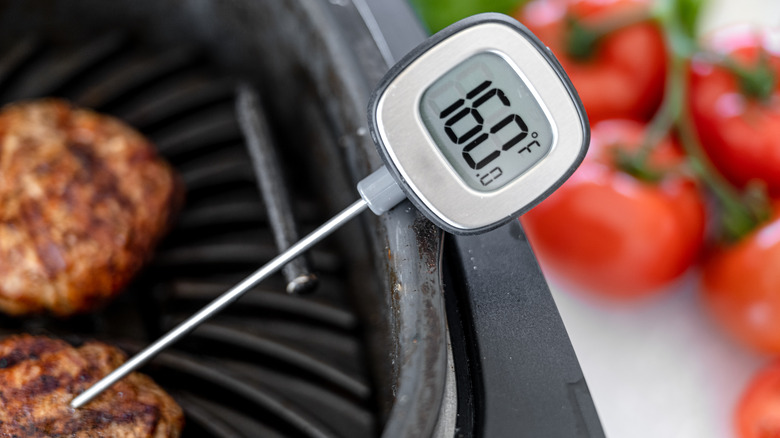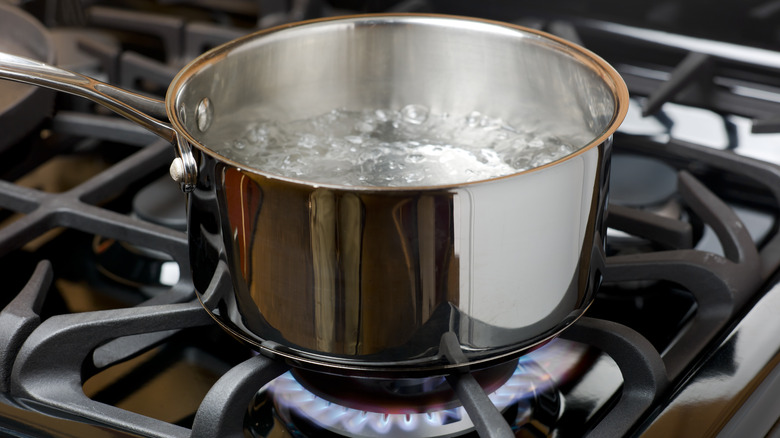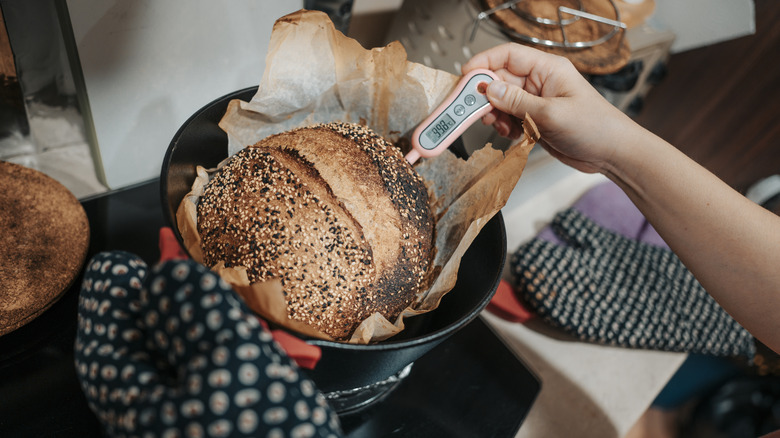How To Calibrate Your Food Thermometer
A food thermometer helps ensure the quality and safety of food when cooking for yourself and others. Whether you're verifying that meat has cooked to the correct internal temperature or that your milk has reached the right temperature to optimize your dough's rise for homemade dinner rolls, it is helpful for both cold and hot foods — so long as its reading is accurate.
A thermometer that is as little as 5 degrees Fahrenheit off from the correct temperature can cause gastrointestinal illnesses. For this reason, it's a good practice to get in the habit of regularly calibrating your food thermometer to make sure it is accurate within 2 degrees Fahrenheit, according to State Food Safety Resources.
There are two simple ways to calibrate a food thermometer in your home kitchen: The boiling point method and the freezing point method. Besides a few essential pieces of equipment, all you will need is water.
The two methods for calibration
The boiling point method is ideal if you most often use your thermometer to take the temperature of hot foods. To start, you'll need to confirm the boiling point for water at the altitude of your kitchen, which you can do with a boiling point calculator. This should be between 190 and 212 degrees Fahrenheit, depending on elevation.
Fill a pot halfway with water, set it on your stovetop, and bring the water to a boil. Once the contents of the pot are bubbling vigorously, dip the thermometer into the water without touching the bottom of the pot while also being careful not to get splashed. Allow the temperature reading time to stabilize, then make sure the water is at the correct local boiling temperature.
The freezing point method is preferred if you generally use your thermometer to monitor cold foods. Simply fill a glass with water and ice, then set it aside for a few minutes. Submerge the thermometer partway into the cup and confirm that the temperature is 32 degrees Fahrenheit.
Uses for your food thermometer and temperatures to know
One of the most essential uses for your food thermometer is to check the temperature of cooked meats, fish, and eggs. These foods pose a high risk for foodborne illnesses, so you'll want to check the safe cooking temperature for each, which is generally between 145 to 165 degrees Fahrenheit, according to the USDA. If you consider yourself a grill master, this means bringing along your food thermometer to barbecues. Place the food thermometer into the thickest part of any food for an accurate internal temperature.
In addition to confirming the safety of certain foods, your thermometer is also an excellent tool for helping you achieve the best results when baking. Did you know that you can use your thermometer to test butter's temperature for certain sweets, like cakes and cookies? When baking yeasted bread and wondering when to remove it from the oven, insert a thermometer — if it's ready, your loaf will be at 190 degrees Fahrenheit.



